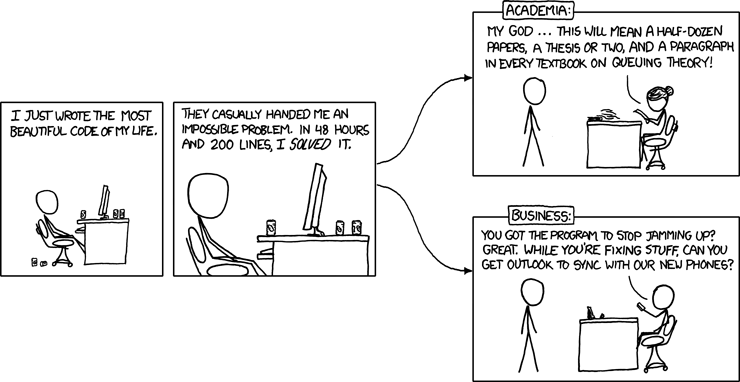. I cannot publish the paper in this blog (at least not until it has been accepted), but I can give the reference list. Many of the papers can be found on-line through
if access is not available through the commercial portals.
AUTOSAR, 2009. AUTomotive Open System ARchitecture (AUTOSAR). Available at: http://www.autosar.org.
Bachmann, F. & Bass, L., 2001. Managing variability in software architectures. SIGSOFT Software Engineering Notes, 26(3), 126-132.
Bass, L., Clements, P. & Kazman, R., 2003. Software Architecture in Practice 2nd ed., Addison-Wesley.
Berg, B.L., 2006. Qualitative Research Methods for the Social Sciences 6th ed., Allyn & Bacon.
Broy, M., 2006. Challenges in automotive software engineering. In Proceedings of the 28th international conference on Software engineering. Shanghai, China: ACM, pp. 33-42. Available at: http://portal.acm.org/citation.cfm?id=1134285.1134292 [Accessed December 18, 2008].
Conway, M.E., 1968. How Do Committees Invent? Datamation. Available at: http://www.melconway.com/research/committees.html.
IEEE, 2000. Recommended Practice for Architectural Description of Software-Intensive Systems. Available at: http://standards.ieee.org/reading/ieee/std_public/description/se/1471-2000_desc.html.
ISO - International Organization for Standardization, 2003. ISO standard 11898: Controller Area Network (CAN). Available at: http://www.iso.org/ [Accessed December 28, 2008].
Kazman, R. & Bass, L., 2005. Categorizing Business Goals for Software Architectures, Carnegie Mellon Software Engineering Institute. Available at: http://www.sei.cmu.edu/pub/documents/05.reports/pdf/05tr021.pdf.
Kazman, R. et al., 2005. The Architecture Business Cycle Revisited: A Business Goals Taxonomy to Support Architecture Design and Analysis. news@SEI. Available at: http://www.sei.cmu.edu/news-at-sei/columns/the_architect/2005/2/architect-2005-2.htm [Accessed December 18, 2008].
LIN Consortium, 2008. Local Interconnect Network (LIN). Available at: http://www.lin-subbus.org/ [Accessed December 28, 2008].
McDermid, J.A., 2000. Complexity: Concept, Causes and Control. In Proceedings. Sixth IEEE International Conference on Engineering of Complex Computer Systems, ICECCS. p. 2–9. Available at: ftp://ftp.cs.york.ac.uk/pub/hise/Complexity-Concept,Causes & Control.pdf.
Melin, K., 1998. Volvo S80: Electrical system of the future. Volvo Technology Report, 1, 3-7.
MOST Cooperation, 2008. Media Oriented Systems Transport (MOST). Available at: http://www.mostcooperation.com/ [Accessed December 28, 2008].
Noergaard, T., 2005. Embedded Systems Architecture: A Comprehensive Guide for Engineers and Programmers, Newnes.
Pretschner, A. et al., 2007. Software Engineering for Automotive Systems: A Roadmap. In 2007 Future of Software Engineering. IEEE Computer Society, pp. 55-71. Available at: http://portal.acm.org/citation.cfm?id=1253532.1254710 [Accessed December 28, 2008].
Reichart, G. & Haneberg, M., 2004. Key Drivers for a Future System Architecture in Vehicles. In Proc. Convergence 2004. Detroit, MI, USA: SAE. Available at: http://www.sae.org/technical/papers/2004-21-0025 [Accessed March 9, 2009].
Smallbone Tizard, D., Wallmark, J. & Warrby, T., 2007. Architecture and Change: A Case Study Using the Architecture Business Cycle for Assessing an Organisation Facing a Major Architectural Change, Göteborg, Sweden: IT University of Göteborg.
Walsham, G., 1995. Interpretive case studies in IS research: nature and method. European Journal of Information Systems , 4, 74-81.
Yin, R.K., 2003. Case Study Research: Design and Methods 3rd ed., Sage Publications.

